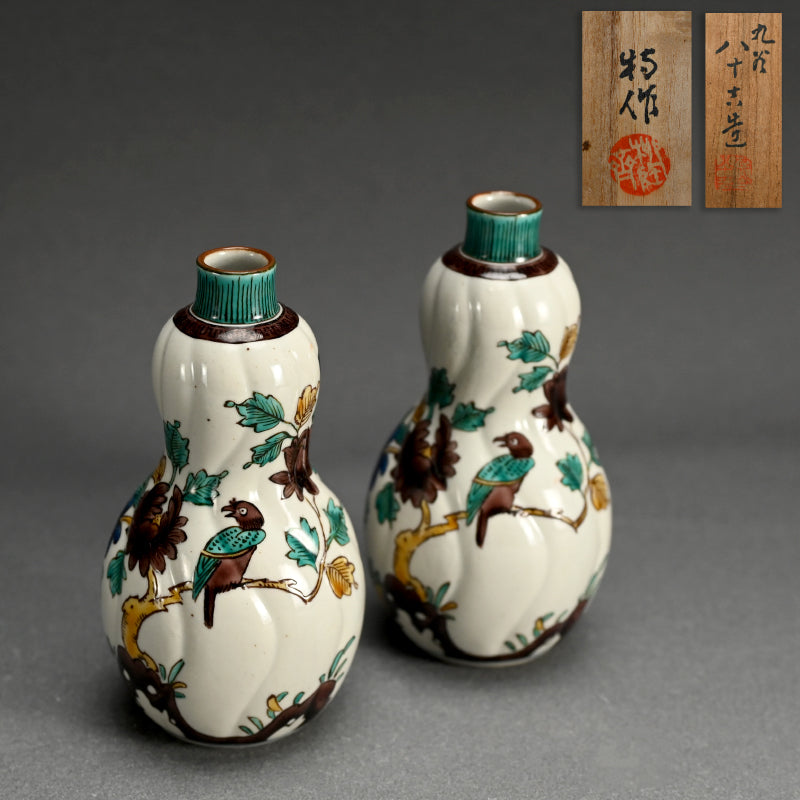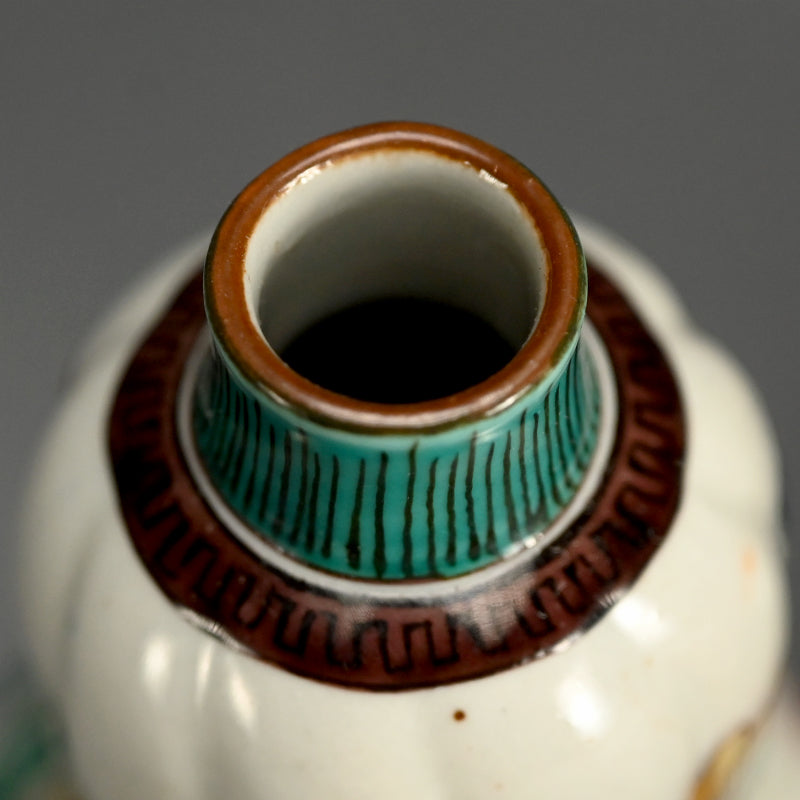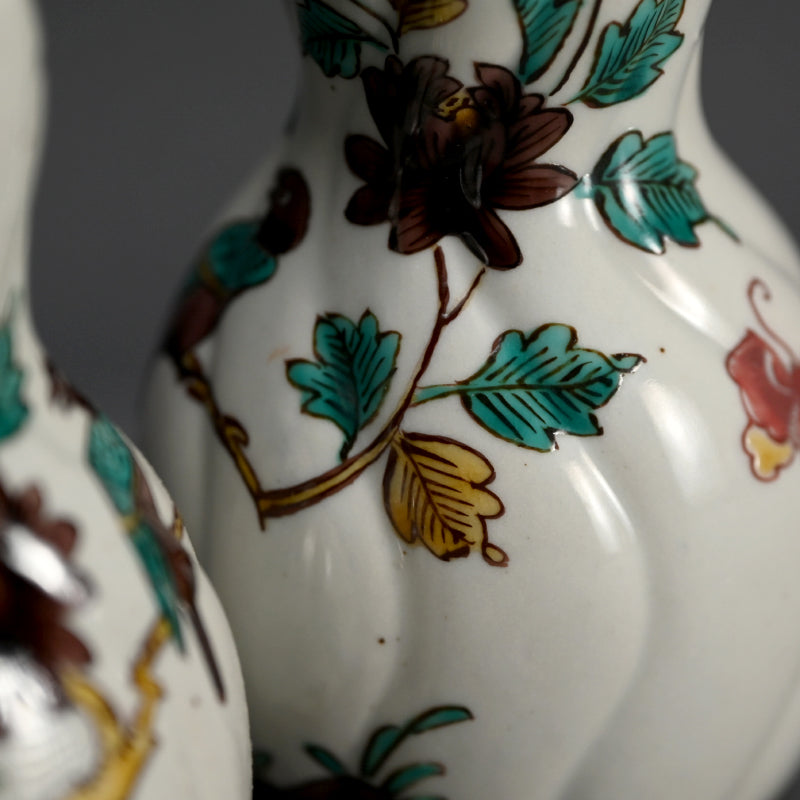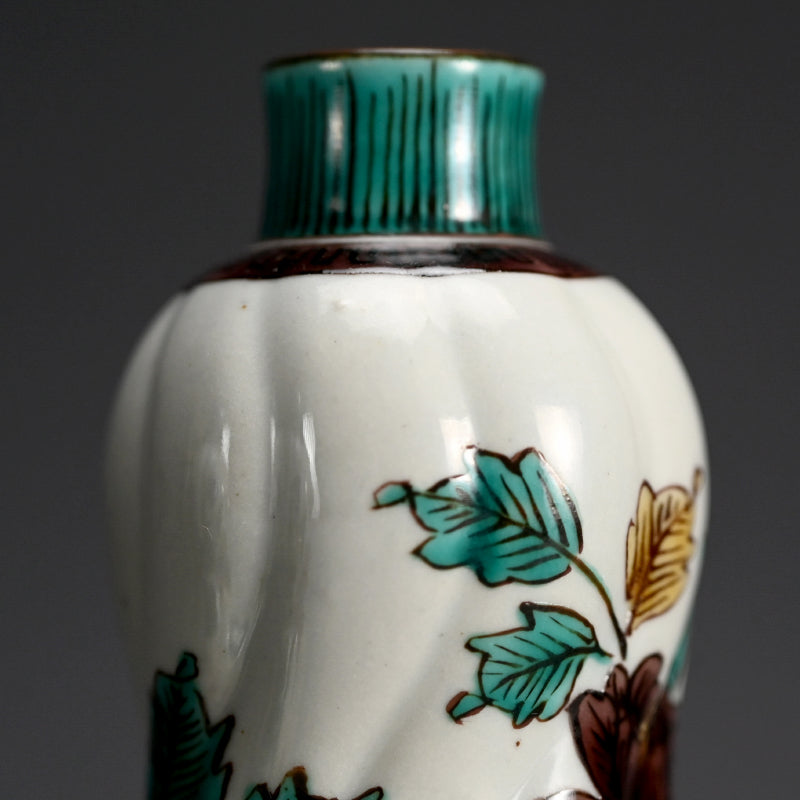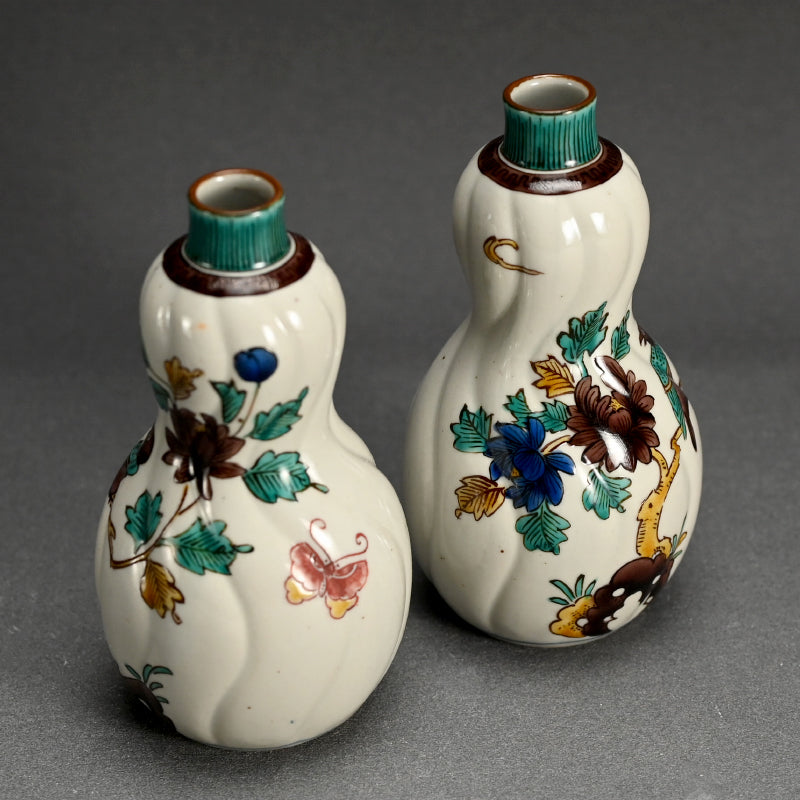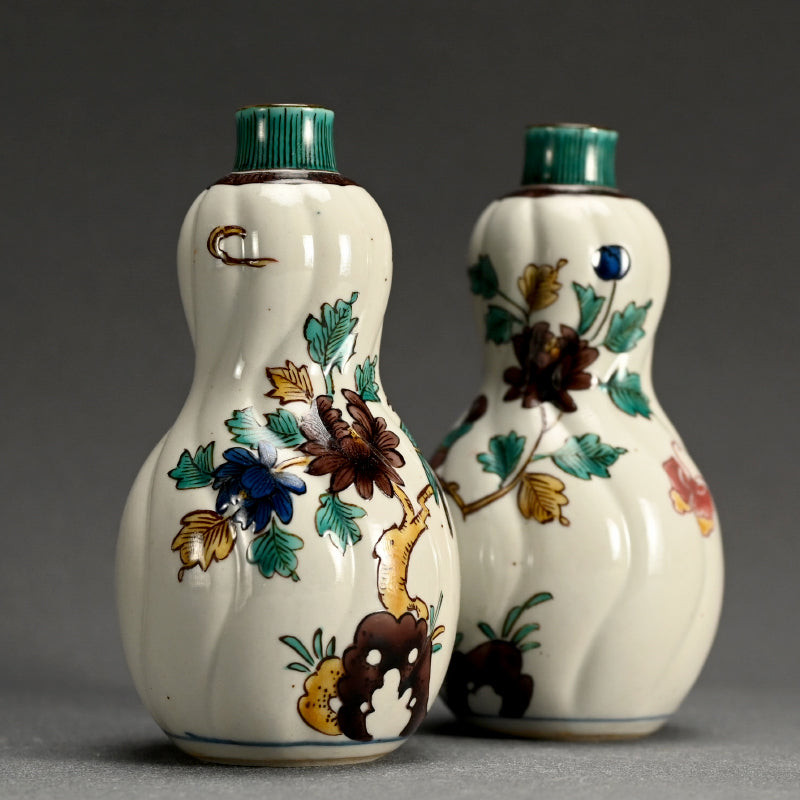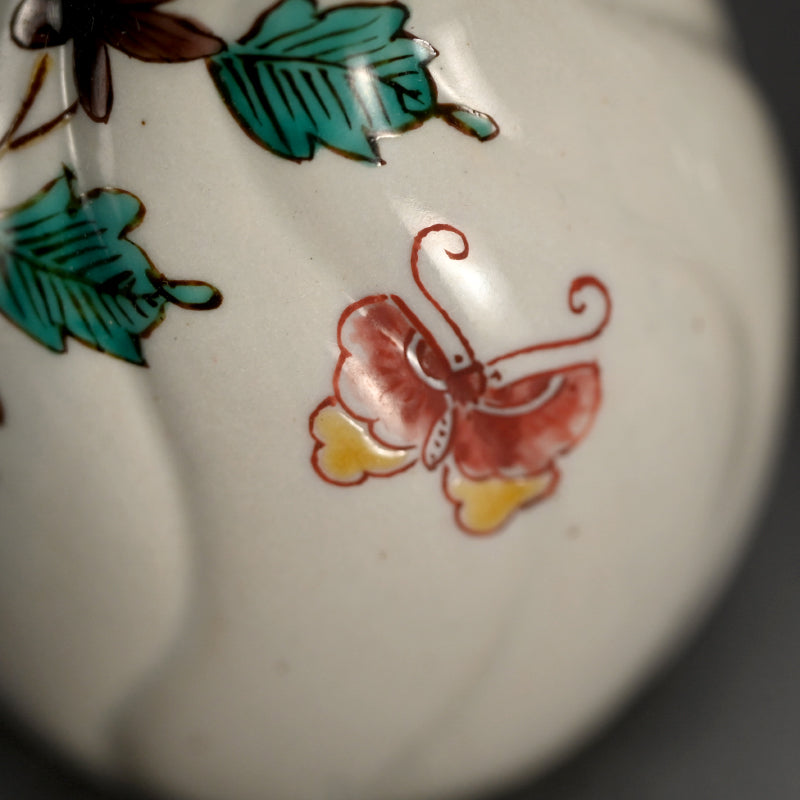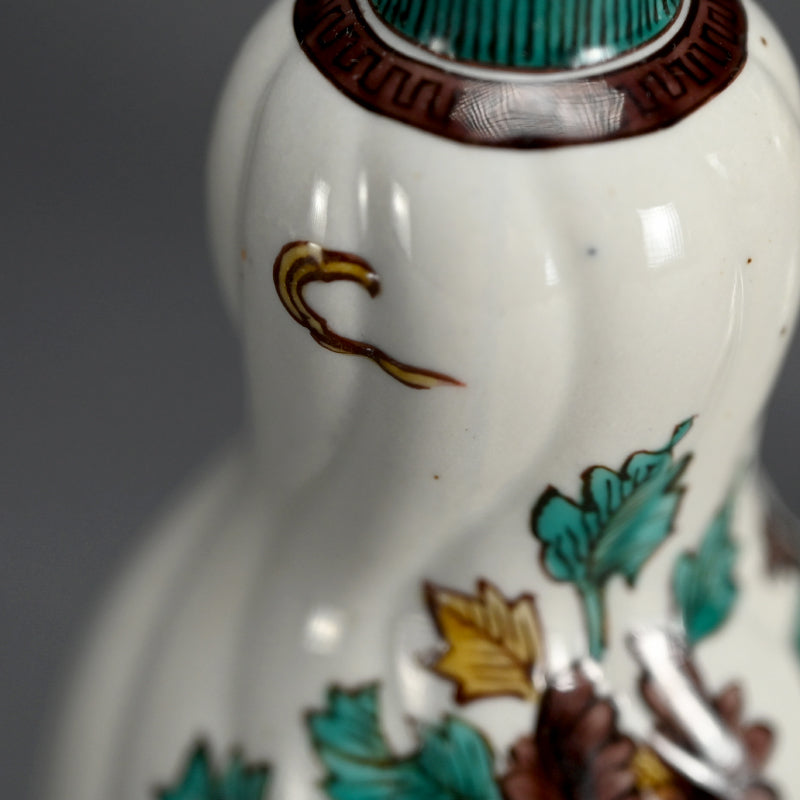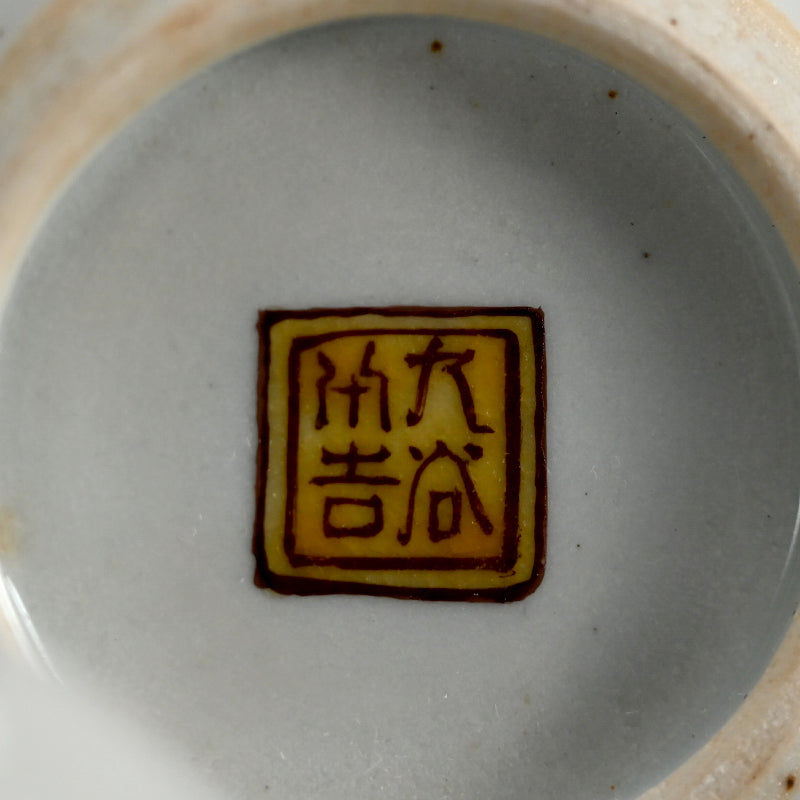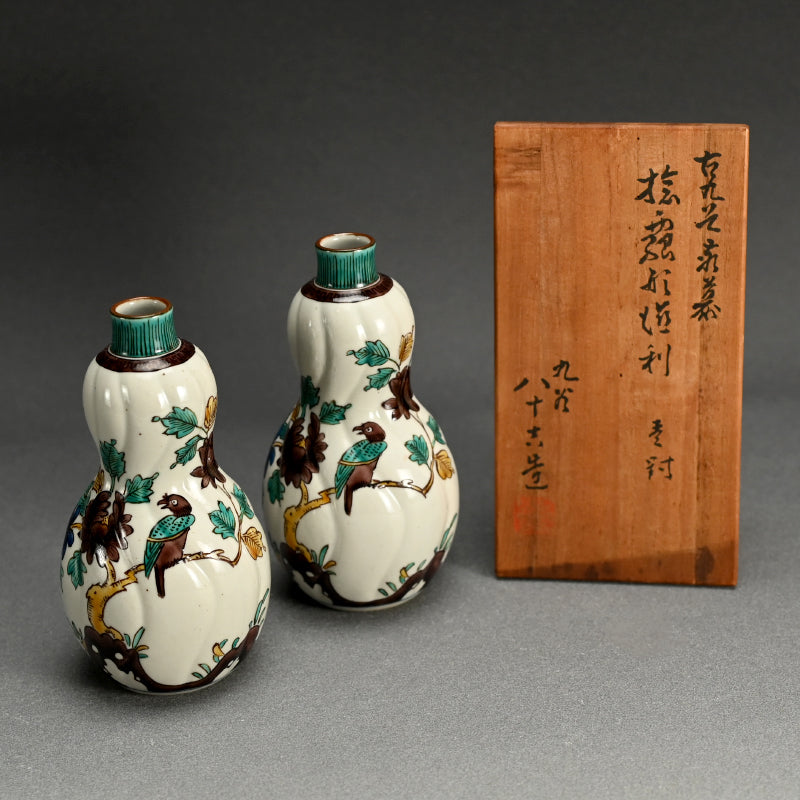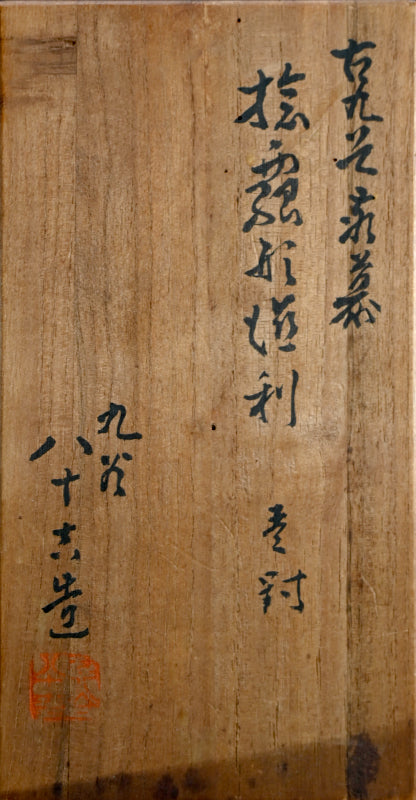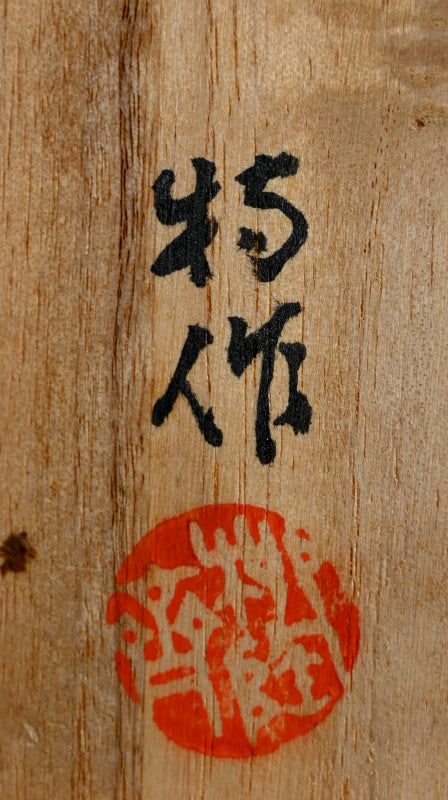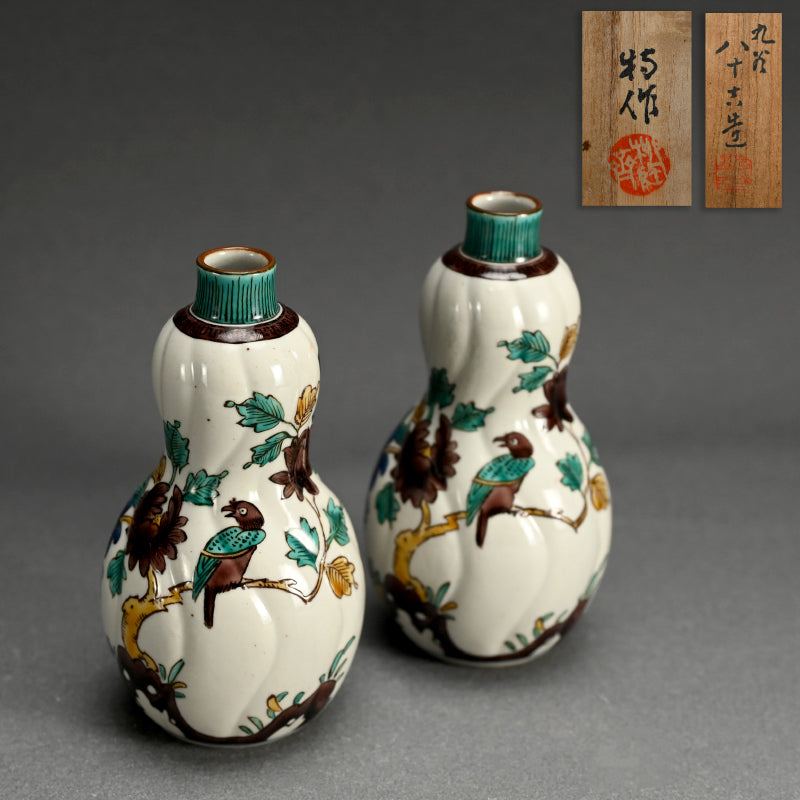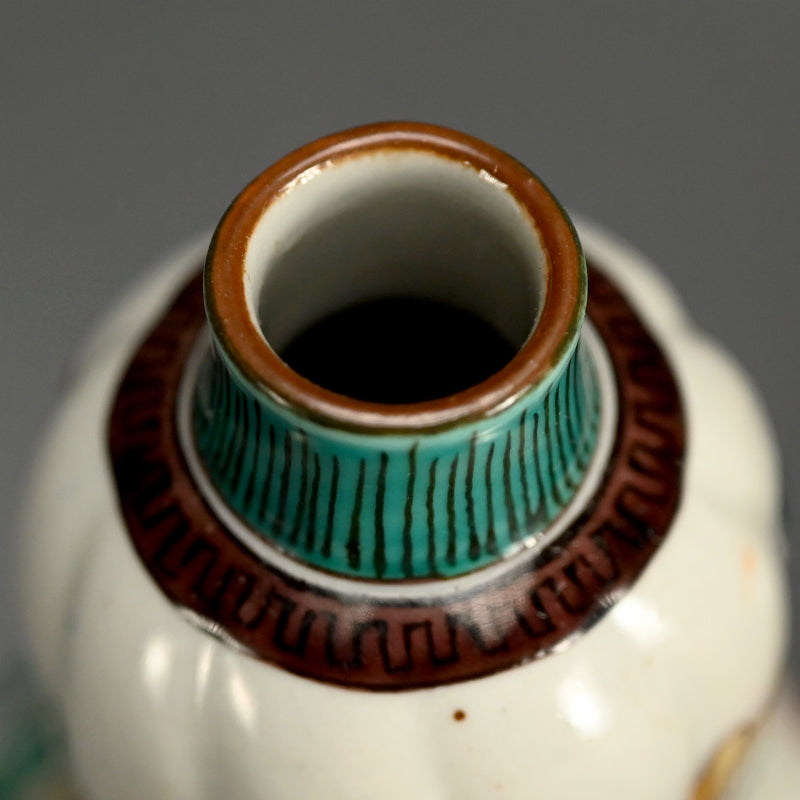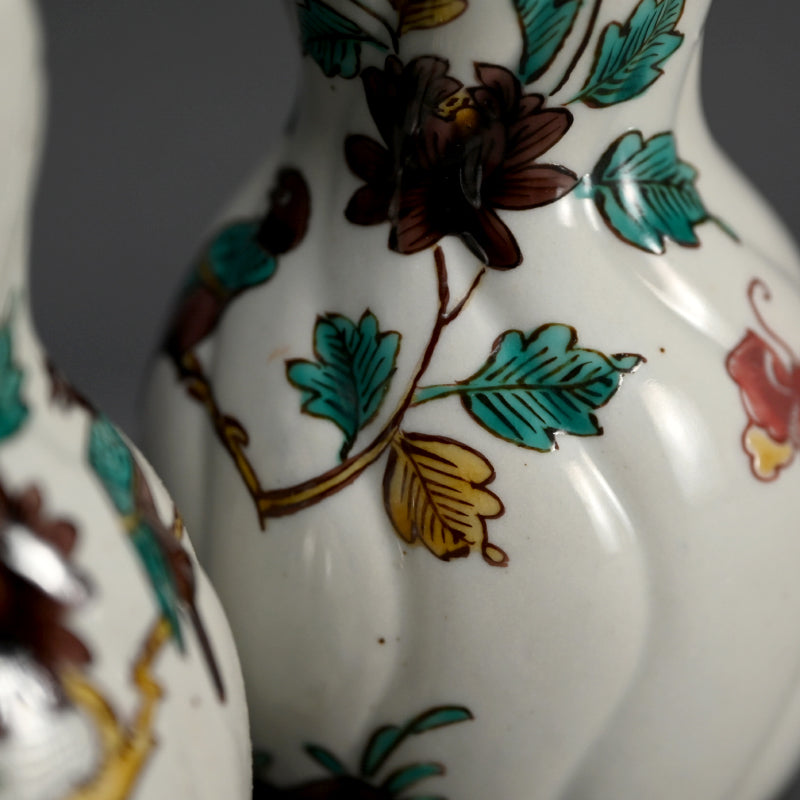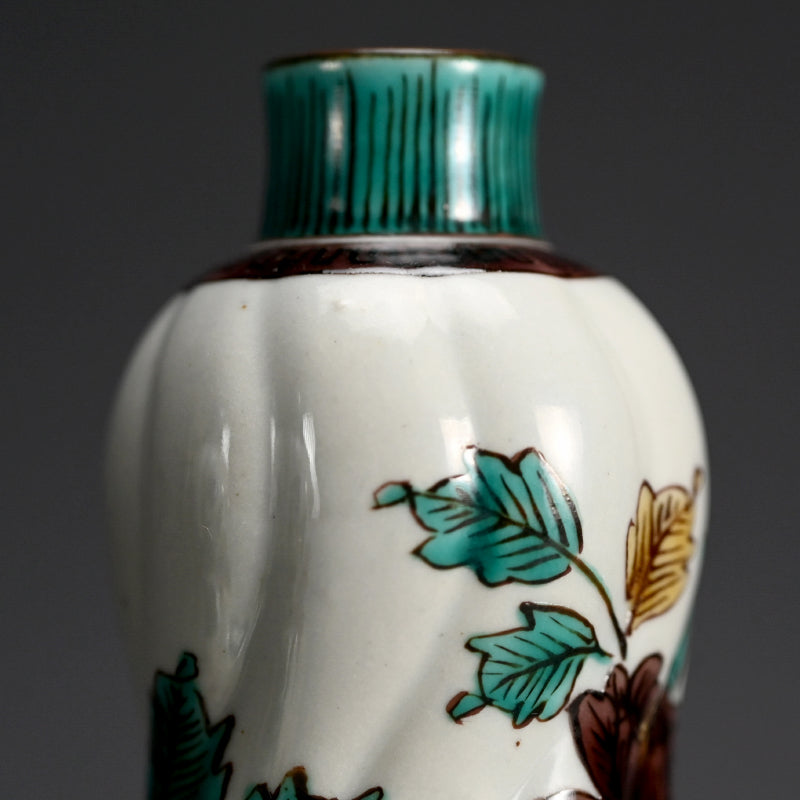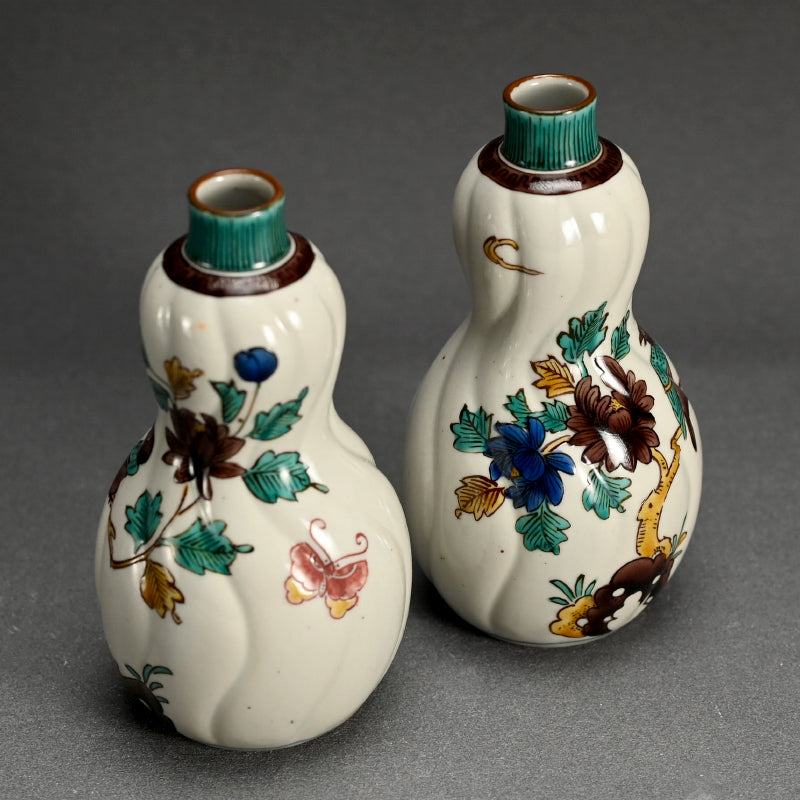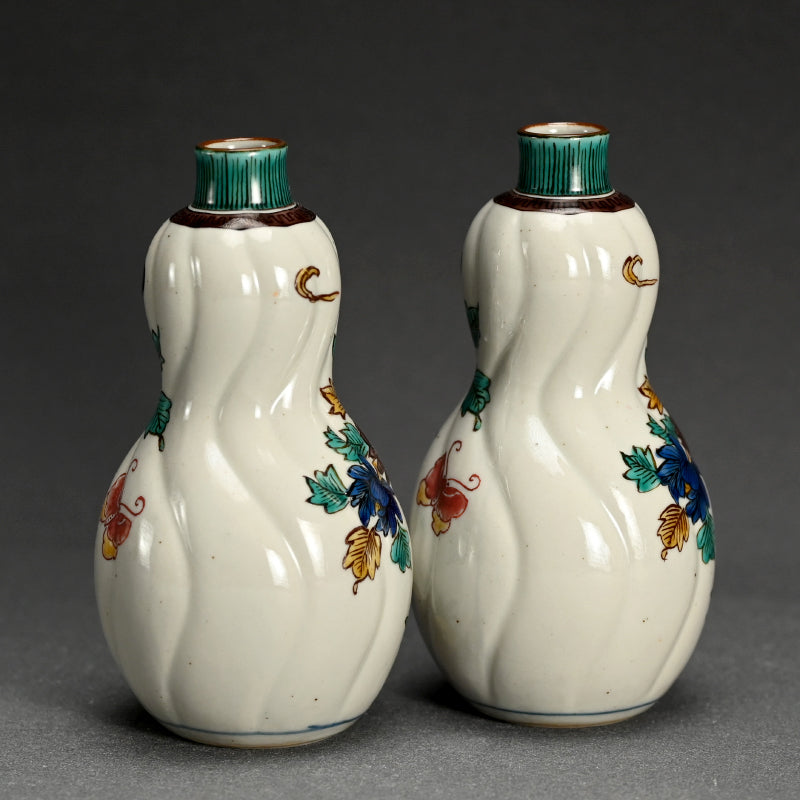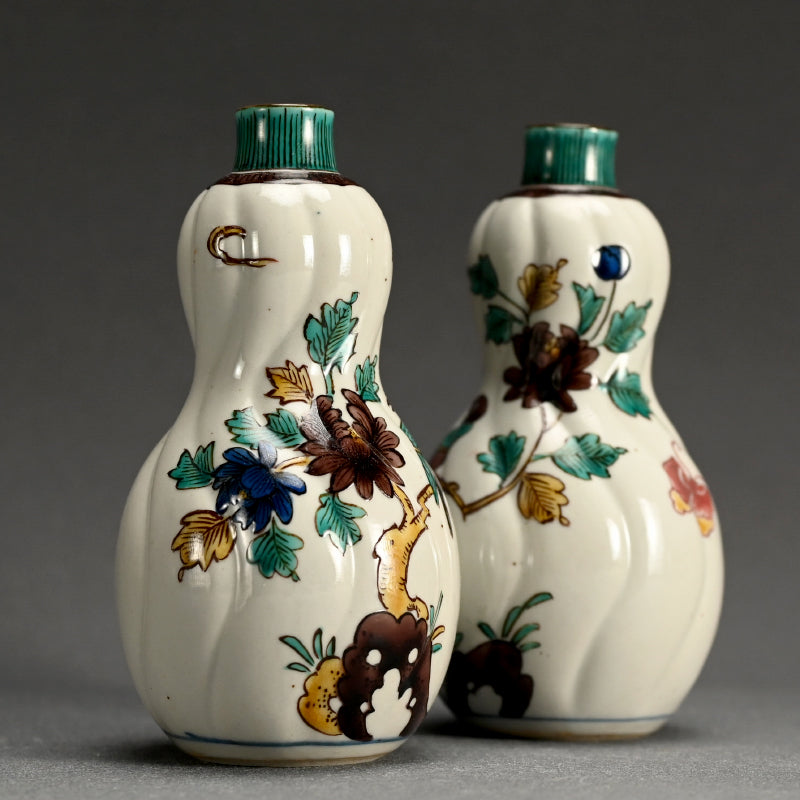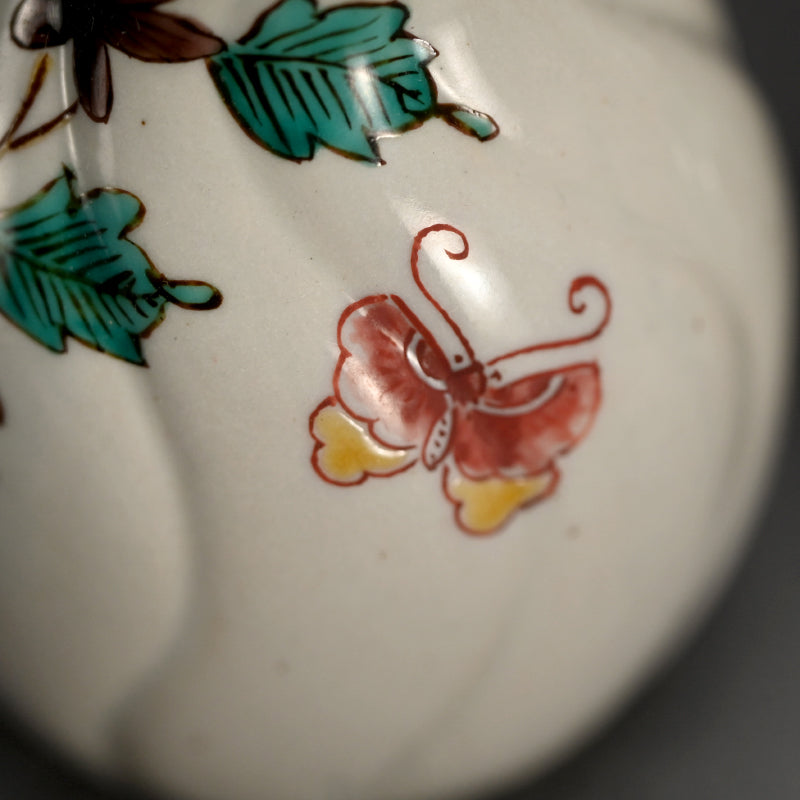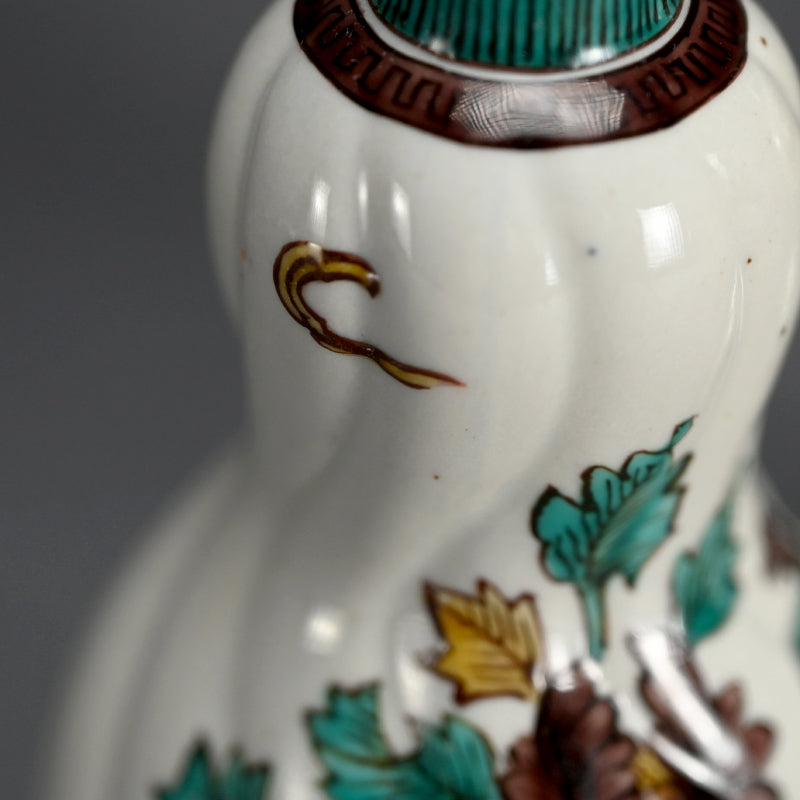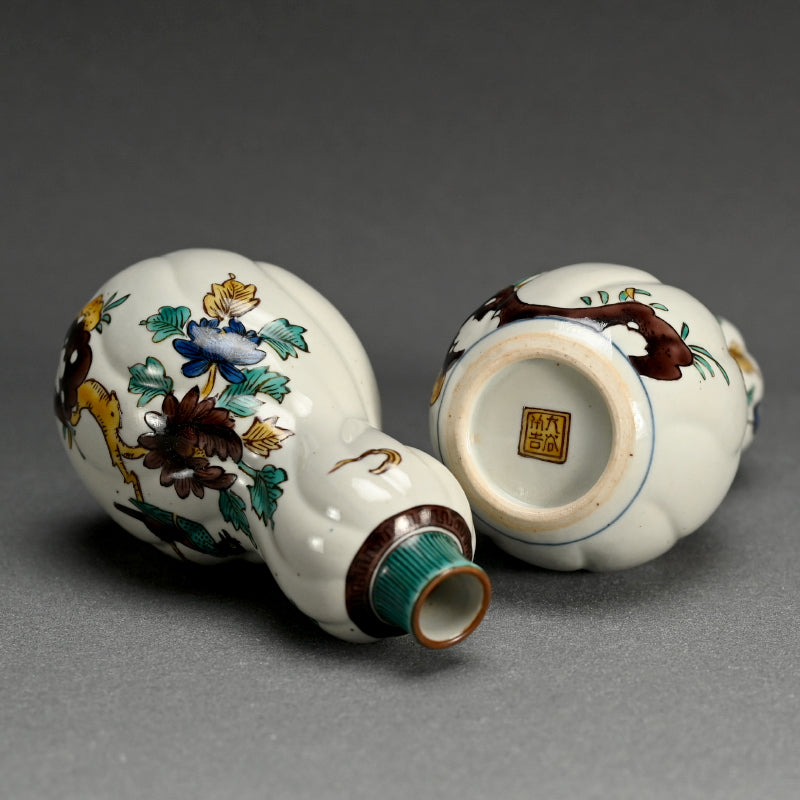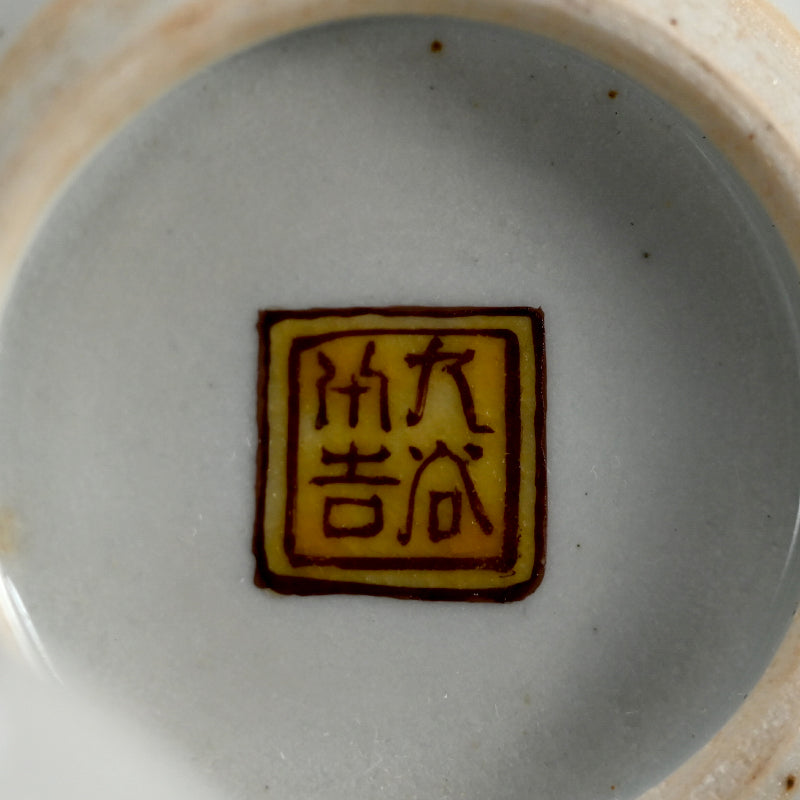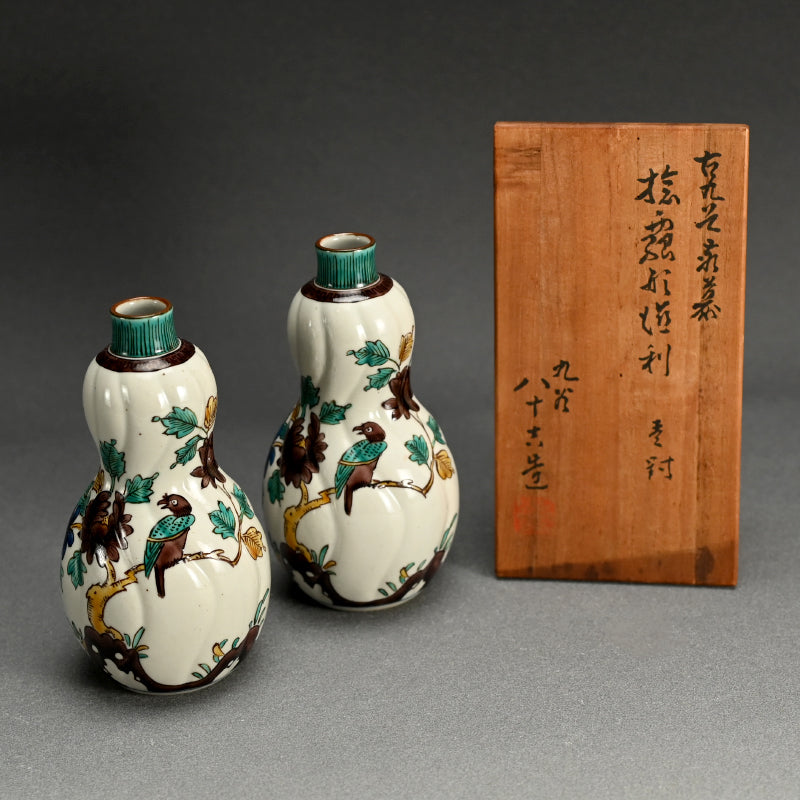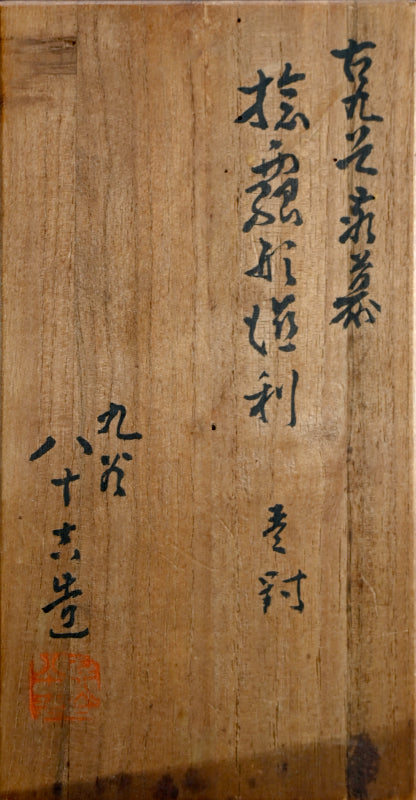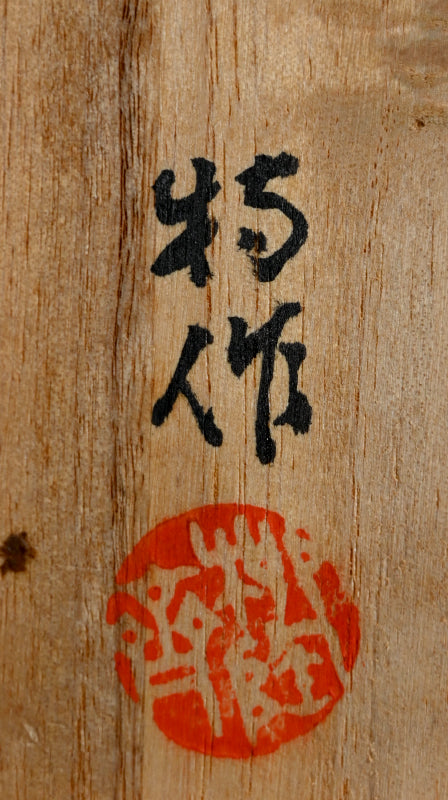Kutani Porcelain Tokkuri ー二代 徳田 八十吉
Kutani Porcelain Tokkuri ー二代 徳田 八十吉
Item Code: K618B
Couldn't load pickup availability
Birds and flowers in various colors, red, yellow, purple blue and green rise up the fluted sides of this pair of porcelain sake bottles decorated in rich color by Tokuda Yasokichi II enclosed in the original signed wooden box. Each is signed on the base in a yellow seal Kutani Yasokichi. They are 15 cm tall and in perfect condition.
The Tokuda family kiln was established by the first Yasokichi (1873-1956)、born into the house of a textile dying family. As one might expect, he initially studied painting under the tutelage of the famous Araki studio. Returning to his home he became employed decorating Kutani ware under his Brother in Law, Matsumoto Sahei, at the Shoun-Do. However after a sojourn in ceramic production under Asakura Isokichi he broke away and established his own kiln where he chafed at the cheap export ware being produced and began a lifelong search for the roots of Ko-Kutani. A search for which he was honored as a Living National Treasure in 1953. Just three years later the kiln was succeeded by his son, Yasokichi II (1907-1997). Yasokichi II was adopted into the Tokuda family in 1923, and studied initially at the Kyoto National Ceramics Research Facility alongside Hamada Shoji and Kanjiro Kawai. He learned under the tutelage of Living National Treasure Tomimoto Kenkichi before devoting himself fully to the family business. He was awarded at the Brussels World Exposition, Nitten, received the Hokuto-sho prize along with many others, and was displayed in Europe and America. He took many opportunities to continue his life quest by study sabbaticals throughout Asia, North and South America and Europe and was awarded the title Ken Juyo Mukei Bunkazai (Living Prefectural Treasure). He passed the name Yasokichi on to his son in 1988. Works are held in the Imperial Household Collection and Ishikawa Prefectural Museum among many others.
Share
